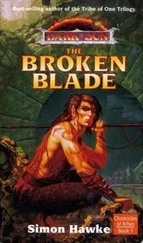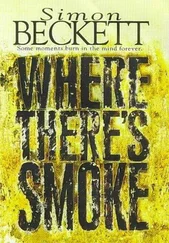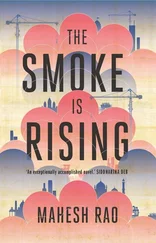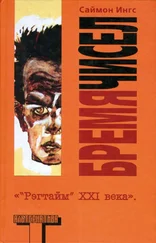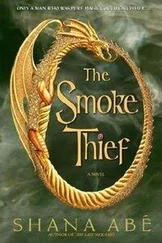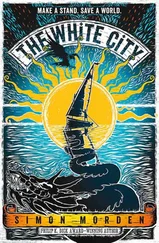Out from under Queen Anne’s skirts, the vistas rolling by grew stranger still. There were no recognisable streets any more, but only the most fractured arrangements of materials through which we swooped in perfect silence on a raised concrete track, like privileged tourists of the future scouting some terrible and ancient wreck.
As I had understood it on my last visit, these playful zones – colossal filing cabinets like blind high-rises and chairs the size of bridges – had served a psychological function. Such outsize fragments of the real were meant, I had thought, to help the labile and disorientated infants of the Process keep the world in mind. They were props, in other words, for people whose grip on reality would otherwise have been fatally loosened by the Process.
It was clear, however, that this year some new strategy was being tried. Outside, there were no objects, but only the parts of objects; no reality, but only the ingredients of one. My brow furrowed and my head ached as we rolled by acre after acre of incomprehensible stuff: the levers from adjustable office chairs, carpet squares, coat hangers, phone sockets, bicycle handlebars, cotton wool, the lids of take-out coffee cups, fluorescent tubes, paint, staples, sandwich packaging, a pile of faceless wooden men, red and blue, unstrung from table-football games, all of it gargantuan, monumental, none of it readable. It was as though the everyday world had been torn apart and discarded, leaving only the components, as meaningless and minatory as the letters of a sentence were you to jumble them and cram them, spaceless, upon a board.
What breakthrough had Chernoy’s researchers made to necessitate this shattering transformation of their playground? Were they trying to actually ape and echo the psychic disintegration of their patients? To what end? What would be the point of that unless it was to prepare their clientele for an altogether different sort of reality? The weightless, hypermediated, so-complex-as-to-be-chaotic reality of the Bund?
When Betty’s Process was complete, she would wake into a new world, that was clear – and not a world I could ever be part of.
Beyond the cutting, the tram slowed and settled, purring, onto its concrete bed. In my hand, Fel’s phone blinked ‘Brockley’, and I disembarked.
Parties of Processed infants were walking under the lime trees of Ladywell, catching the last of the daylight. The air was fresh, and I was certain that it was only my imagination that filled the streets with the faint ghost of an echo of a dentist’s drill, the fleeting suggestion of mouthwash, the yeasty smell of fresh Band-Aids.
On my first visit, with Stella, it was obvious at a glance how this area had been given over to various ancillary medical services. Aside from anything else, there were signs all over the road, severe speed restrictions, crossings at every junction, lights in the kerbs and ramps up to every door. All that I had seen last August, just eight months earlier, had been removed. Had the Chernoy Process somehow done away with the need for dentists, GPs, sports therapists and all its other hangers-on? Or was Medicine City simply learning the art of disguise? I passed along an avenue of cherry trees. It was easy to imagine that the area was restored to what it had been before the Great War: a leafy and fashionable suburb of the City.
The infants of the Process moved awkwardly along the pavement in bands of between half a dozen and a dozen. They moved too sedately for children, though now and again I saw, pelting in another direction, groups of runners.
They bashed along the pavement together, equally silent, equally serious, as though fleeing for their lives.
Too slow. Too fast. I tried to imagine what Chernoy’s Processed infants were going through as they struggled to come to terms with their strange new bodies. Half-remembered. Half-familiar. Too small. Too strong by half.
Everyone was civil, letting me by on the narrow pavement, but the way people here travelled in groups unnerved me. I wondered what their common purpose was. Half a dozen overtook me at a run. Instinctively, I brought Fel’s phone close to my chest, protecting it. Were all these infants following an exercise regime, I wondered, or something more atavistic? The boast of the Chernoy Process was that the mind lived on in a new body – but what if the body had its own agenda? The body of a child, flexing, expanding into the space afforded it, testing every limit: such a body would have its own ideas. What must it be like, to take a ride in that body? To be tied to it? Committed to it?
I came to a street that must once have been a main traffic artery; now it appeared to have been given over entirely to promenaders and runners. I climbed wrought-iron stairs to a rolling walkway raised above the road. I travelled east.
I tapped Fel’s phone. I was meeting my mother in an indeterminate zone, a white space on the phone’s projected map, near buildings, near a park. Now I understood Fel’s confusion. It was impossible from the map to tell whether I was meeting Betty outdoors or inside. There were no other details beyond a time of meeting.
Someone barrelled into me from behind and I fell, dropping the phone.
I saw a bright trainer, a stylised skull stitched to the heel, and a hand snatching up the phone. I got to my feet. The young man leapt from the handrail of my walkway into the trough of the one moving parallel to mine, in the opposite direction. The combined speed of the walkways caused him to spin and tumble when he landed. He was already far behind me when he got to his feet. He was unhurt. He stood, arms folded, staring me down as he vanished in the fading light.
My heart hammered in my chest. Panic fizzed through me. But it was over and done and there was nothing I could do about it: I had been mugged. I don’t know whether it was the absurdity of the incident or what, but I felt strangely insulated from the assault. I was shaken, and stayed shaken a long while. At the same time, I found the incident impossible to take seriously. Here, in a place technologised to the point of incomprehension, someone wanted to steal a phone? Was this area haunted by unaccommodated criminals? Or was my assailant one of Chernoy’s patients, testing the limits of their regained youth? Exuberant. Out of control…
I should have run after him. I should have leapt from walkway to walkway and pursued him. But I had never been athletic, and I lacked the reflexes that make quick action possible.
So it occurred to me far too late that without the phone I wouldn’t be able to find my mother. And even as I thought this, the road, which had risen to cross water, met with a walkway, and the boards under my feet meshed and slowed.
I took metal stairs down to the waterside. There was a small river here: a well-domesticated suburban tributary of the Thames.
Along its banks were trees in full leaf, and leading away from the river, a peculiar, maze-like public park made of narrow gravel paths between hillocks no more than a few feet high. These must have been artificial. Between the hillocks, raised on wooden posts wrapped around with coloured scarves, were tents, marquees and gazebos of every size and shape. The tents were brightly coloured, lit by lamps that gave off a warm, organic glow. These lamps were hung from the tent posts, or placed upon the ground behind screens of ornate punctured tin. In each shelter lay a couch. Some tents held two couches, I suppose for partners who – not to be parted by death – had chosen to undergo the Chernoy Process together. And on each couch sprawled a living human form.
Some were naked. Others lay smothered in a thicket of metal branches which, growing up around their couch, threshed about, dipping in and out of that prone and defenceless flesh as if spooning it up.
Читать дальше

